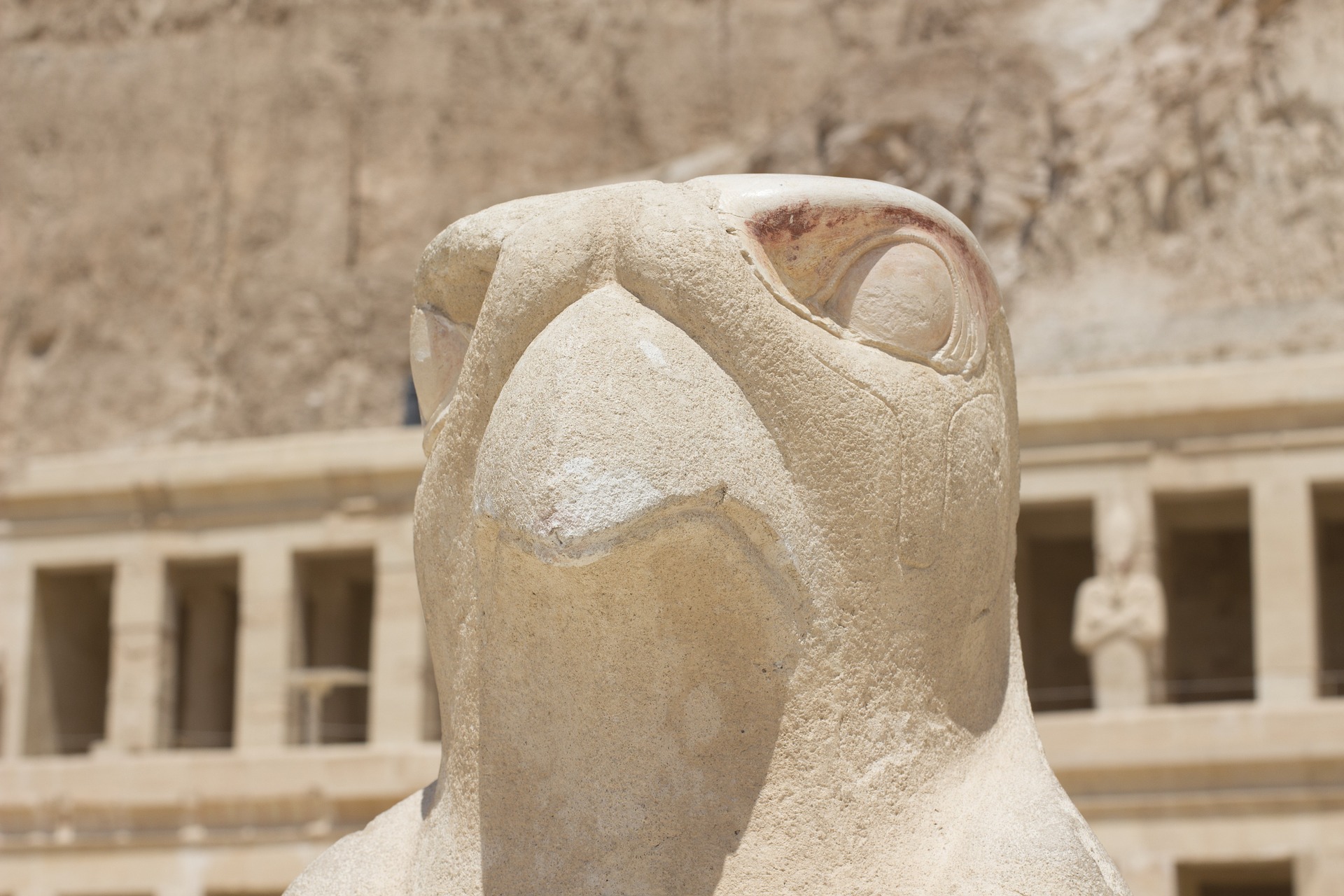 Submitted by Glorious Bastard on
Submitted by Glorious Bastard on

pixabay.com
... He is Horus who arose as king of Upper and Lower Egypt,
who united the Two Lands in the Nome of the Wall,
the place in which the Two Lands were united.
From the Shabaka Stone, British Museum
This most ancient of deities is most definitely not to be confused with Horus(Hor-sa-Isis or Haroeris), child of Isis and Osiris. In his earliest incarnation, Horus was a sky god whose name was “Hor,” meaning either “face” or “distant,” but he later evolved into a solar deity during the introduction of the Osirian cult.
The usual iconography of this god was of either a falcon or a man with the head of a falcon on his shoulders. However this Neter embodied within himself a multitude of falcon gods in various manifestations and with various names, a few being:
Horus of Behdet (located in the Western Delta) took form as a hawk-headed warrior. His cult moved from the Western Delta to Edfu, in Upper Egypt in later times, and the temple here subsequently became known famously as Edfu. It was known colloquially as Djeba (“Retribution Town”) because of the fact that Set and his followers were brought to justice there.
Harakhti (“Horus of the Two Horizons”). God of the east and the rising sun.
Behdety (“He of [the] behdet”). The hawk-winged sun disk that symbolized the passage of the sun through the sky.
Harpocrates (Har-pa-khered–“Horus the child”). The god manifests as a child sitting on his mother’s knee, wearing the side-lock of hair and occasionally sucking his fingers. This form is of the divine child.
Harisiese (Horus, the Son of Isis). This representation symbolizes the legitimacy of the Osirian line made manifest in the offspring of Isis and Osiris.
Horus or Heru was evident as a Neter of kings from at least predynastic times, with a cult center based in the ancient capital city of Upper Egypt, Nekhen (Greek name Hierakonopolis—“City of the Falcon”). A falcon deity had been preeminent in Nekhen since early times and it was this deity, Nekheny, who was subsequently absorbed into Horus. Nekhen’s crown was lost to Edfu in later times, but it still remained an important cult center for Horus.
Excavations at this site in modern times have revealed an oval, temple-like structure (dating to the early Naqada II) closely resembling temples found in Mesopotamia, perhaps indicating ancient trade links with this culture. The peoples of the ancient world were great explorers; they exchanged not only goods but also ideas. These ideas were like precious seeds that gave rise to important cultural, spiritual, and economic developments, and Egypt’s civilization benefited greatly from the flow of this information.
Remains at this site have revealed a circular stone wall, paved areas, and remnants of column bases. We can only surmise that a pole displaying the image of the Neter may have stood in the center of this space, whilst at its base were ceremonial platforms and around the courtyard were workshops for a variety of craftsmen. The central shrine looks to consist of three rooms, with four huge timber pillars making up the façade and colored mats serving as the walls.
With regard to the relationship between Horus and Set, we need to be aware of the dynamics of the relationship between the Neters and their embodiment of balanced rulership within the Two Lands. There has been great debate about whether there is a historical basis to the Horus-Set struggle enshrined within Egyptian mythology. Some authorities see it as a predynastic power struggle between the tribal leaders of Upper Egypt (followers of Horus) and those of Lower Egypt (followers of Set). Once unification had occurred, Horus reigned supreme as national deity, and history was rewritten by the victors many decades later.
We may be familiar with the tales of Horus, son of Isis, and the titanic battle with his uncle Set for the throne of Egypt, so we shall not enter into its recounting here.
Have we come any nearer to even understanding this Neter? Perhaps? Or perhaps not. As an embodiment of divine and human kingship, Horus emanates measured calm, deep wisdom, and immense strength. He is a warrior king embodying the power and beauty of an ancient, ancient civilization, one who is capable of great ferocity in defense, but it is a controlled force, wasting nothing, focused and direct. Equally he is wise in the ways of kingship, one who is utterly trustworthy and speaks words of Truth.
It is to our discredit that our perceptions of this most ancient and august of Neters appears not to shift too far from the image of the Osirian child. That may be so, Pilgrim, but you are blessed with free will; seek the truth behind the illusionary truths that confront you.
From Pathworking with the Egyptian Gods, by Judith Page and Jan A. Malique
https://www.llewellyn.com/journal/article/2126
Copyright © 2013, Llewellyn Worldwide Ltd
- 944 reads